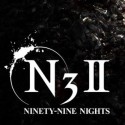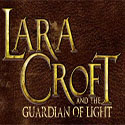Thousands of Planet Nurseries Found in Orion Nebula
 NASA’s Spitzer Space Telescope has discovered well over 2,000 planet-forming discs surrounding young stars in the Orion Nebula. These were observed indirectly using infrared photography, which detects the temperature variations indicating the existence of the discs.
NASA’s Spitzer Space Telescope has discovered well over 2,000 planet-forming discs surrounding young stars in the Orion Nebula. These were observed indirectly using infrared photography, which detects the temperature variations indicating the existence of the discs.
The Orion Nebula is 1,450 light years from Earth, and is about 240 light years across. The image of Orion was released yesterday, and shows objects smaller than our own Sun in that region for the first time. Thomas Megeath of the University of Toledo said, “This is the most complete census of young stars with discs in the Orion cloud complex…basically, we have a census of potential solar systems, and we want to know how many are born in the cities, how many in small towns, and how many out in the countryside.”
Three-fifths of the stars that had discs were found in large clusters. One fourth of them were solitary, with the remainder belonging to small clusters. This has caused astronomers to rethink their earlier belief that 90% of all stars are born in clusters. The researchers estimate that the number of stars with proto-planetary discs in Orion may run as high as 70%. “It is an interesting question why this number isn’t 100%,” Megeath stated. “Eventually, we may be able to understand why some stars don’t have discs.”
Click on the above left image to see the Spitzer image in all its glory.
Via New Scientist
 NASA’s Spitzer Space Telescope has discovered well over 2,000 planet-forming discs surrounding young stars in the Orion Nebula. These were observed indirectly using infrared photography, which detects the temperature variations indicating the existence of the discs.
NASA’s Spitzer Space Telescope has discovered well over 2,000 planet-forming discs surrounding young stars in the Orion Nebula. These were observed indirectly using infrared photography, which detects the temperature variations indicating the existence of the discs.
The Orion Nebula is 1,450 light years from Earth, and is about 240 light years across. The image of Orion was released yesterday, and shows objects smaller than our own Sun in that region for the first time. Thomas Megeath of the University of Toledo said, “This is the most complete census of young stars with discs in the Orion cloud complex…basically, we have a census of potential solar systems, and we want to know how many are born in the cities, how many in small towns, and how many out in the countryside.”
Three-fifths of the stars that had discs were found in large clusters. One fourth of them were solitary, with the remainder belonging to small clusters. This has caused astronomers to rethink their earlier belief that 90% of all stars are born in clusters. The researchers estimate that the number of stars with proto-planetary discs in Orion may run as high as 70%. “It is an interesting question why this number isn’t 100%,” Megeath stated. “Eventually, we may be able to understand why some stars don’t have discs.”
Click on the above left image to see the Spitzer image in all its glory.
Via New Scientist



